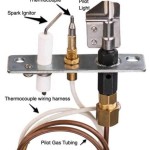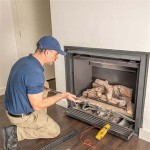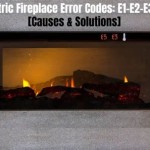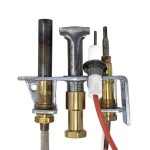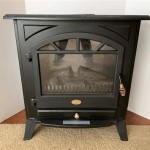Fireplace Installation in San Diego: A Comprehensive Guide
Fireplace installation in San Diego involves a multifaceted process, encompassing careful planning, meticulous execution, and adherence to local regulations. Whether upgrading an existing fireplace or introducing a new one, understanding the intricacies of this undertaking is paramount for ensuring safety, efficiency, and lasting enjoyment. This article provides a comprehensive overview of the key aspects involved in fireplace installation within the San Diego region.
The initial step in any fireplace installation project is determining the ideal type of fireplace to suit the individual needs and preferences of the homeowner. Several options are available, each with distinct characteristics and advantages. These include wood-burning fireplaces, gas fireplaces, and electric fireplaces. The choice is influenced by factors such as heating requirements, aesthetic considerations, budget constraints, and environmental impact.
Wood-burning fireplaces offer a traditional ambiance and a natural heat source. They require a chimney for venting smoke and combustion byproducts. Gas fireplaces provide convenience and ease of use, often with remote control operation and adjustable flame settings. They can be fueled by natural gas or propane and require a gas line connection. Electric fireplaces are the simplest to install, requiring only an electrical outlet. They offer a visual simulation of flames and can provide supplemental heat.
Selecting the Right Fireplace Type for Your Needs in San Diego
The selection process should begin with a thorough assessment of the space where the fireplace will be installed. Consider the size of the room, the existing architectural style, and any structural limitations. A smaller room might be better suited to an electric or gas fireplace, while a larger space could accommodate a wood-burning option. The presence of an existing chimney significantly simplifies the installation of a wood-burning fireplace. If no chimney exists, the cost of installing one must be factored into the overall budget.
Furthermore, consider the local climate and typical heating needs. San Diego enjoys a relatively mild climate, but evenings can be cool, especially during the winter months. A fireplace can provide supplemental heat and create a cozy atmosphere. Energy efficiency is another crucial factor. Opt for models with high efficiency ratings to minimize energy consumption and reduce utility costs.
Budgetary considerations play a significant role in the selection process. Wood-burning fireplaces often have lower initial costs but require ongoing expenses for firewood. Gas fireplaces typically have higher upfront costs due to the need for gas line installation. Electric fireplaces are generally the most affordable option, both in terms of initial purchase and ongoing operating costs.
Once the type of fireplace has been chosen, the next step is to obtain the necessary permits. Fireplace installation typically requires permits from the local building department. These permits ensure that the installation complies with building codes and safety regulations. Failing to obtain the required permits can result in fines and delays, as well as potential safety hazards.
The permitting process involves submitting detailed plans and specifications to the building department for review. These plans should include information about the fireplace model, the venting system, and the surrounding construction. A qualified contractor can assist with the preparation of these plans and navigate the permitting process.
San Diego County's Building Department provides comprehensive guidelines for fireplace installation, covering aspects such as fire safety, ventilation requirements, and structural integrity. Adhering to these guidelines is essential for ensuring a safe and compliant installation. The required inspections usually involve verifying that the fireplace is properly installed, the venting system is functioning correctly, and all safety clearances are met.
Navigating the Permitting Process in San Diego
Understanding the specific requirements of the San Diego County Building Department is central to a smooth and efficient permitting process. It is recommended to contact the department directly or to consult with a licensed contractor experienced in fireplace installations in the area. This will help ensure that all necessary documentation is prepared correctly and that the installation adheres to all applicable codes.
The plan review process can take several weeks, depending on the complexity of the project and the workload of the building department. It is advisable to submit the permit application well in advance of the anticipated installation date. Once the permit is approved, the installation can proceed, but it is important to schedule inspections at various stages to ensure compliance with the approved plans.
Common issues that can arise during the permitting process include incorrect or incomplete documentation, failure to meet safety clearances, and inadequate ventilation. Addressing these issues promptly and effectively can prevent delays and ensure a successful installation. A licensed contractor will be familiar with these potential pitfalls and can guide the homeowner through the process.
After securing the necessary permits, the actual installation can begin. This process involves preparing the site, installing the fireplace unit, connecting the venting system, and making the necessary electrical or gas connections. The complexity of the installation depends on the type of fireplace and the existing infrastructure.
Wood-burning fireplace installation typically involves constructing or modifying the chimney to ensure proper draft and ventilation. Gas fireplace installation requires running a gas line to the fireplace location and ensuring that all connections are leak-proof. Electric fireplace installation is the simplest, often requiring only an electrical outlet and minimal structural modifications.
Proper ventilation is crucial for all types of fireplaces. Wood-burning fireplaces require a chimney with adequate height and diameter to ensure proper smoke evacuation. Gas fireplaces require a venting system that meets specific code requirements to prevent carbon monoxide buildup. Electric fireplaces do not require venting, but it is important to ensure that the surrounding area is adequately ventilated to prevent overheating.
Ensuring Proper Installation and Safety
Safety is paramount when installing any type of fireplace. Adhering to manufacturer's instructions and local building codes is essential for preventing fires, gas leaks, and other hazards. A qualified contractor will have the expertise and experience to ensure that the installation is performed safely and correctly.
For wood-burning fireplaces, it is important to maintain proper clearances between the fireplace and combustible materials such as wood framing and furniture. The chimney should be inspected regularly and cleaned annually to prevent creosote buildup, which is a fire hazard. Gas fireplaces should be inspected annually by a qualified technician to ensure that all connections are leak-proof and that the burner is functioning properly.
Smoke detectors and carbon monoxide detectors should be installed in the vicinity of the fireplace to provide early warning of potential hazards. These detectors should be tested regularly to ensure that they are functioning properly. It is also important to educate all household members on fire safety procedures, including how to operate the fireplace safely and what to do in case of a fire.
Once the installation is complete, it is essential to thoroughly inspect the fireplace to ensure that it is functioning properly and that all connections are secure. For gas fireplaces, a leak test should be performed to verify that there are no gas leaks. For wood-burning fireplaces, a test burn should be conducted to ensure that the chimney is drafting properly.
Regular maintenance is crucial for ensuring the long-term performance and safety of the fireplace. Wood-burning fireplaces require regular cleaning to remove ash and creosote. Gas fireplaces require periodic inspections to check for leaks and burner malfunctions. Electric fireplaces require minimal maintenance, but it is important to keep the unit clean and free of dust.
By carefully planning the installation, obtaining the necessary permits, and ensuring that the installation is performed by a qualified contractor, homeowners can enjoy the warmth and ambiance of a fireplace safely and efficiently. Regular maintenance will help ensure that the fireplace continues to provide years of enjoyment.

Fireplace Insert We Install Gas Wood Electric Inserts

San Diego Fireplace Design Center Capo Fireside

Top 10 Best Gas Fireplace Installation In San Diego Ca Updated 2024 Yelp

Gas Fireplace Inserts And Installations Family Owned Operated

San Diego Fireplace Design Center Capo Fireside

San Diego Fireplace Remodels Design And Repair In

San Diego Fireplace Remodels Design And Repair In

San Diego Fireplace Remodels Design And Repair In

Pellet Inserts Sweep S Luck Chimney Dryer Vent And Air Duct Cleaning Company Serving San Diego Lake Arrowhead

Authentic Fireplaces Updated April 2024 43 Reviews San Diego Fireplace Services Phone Number Yelp
Related Posts



